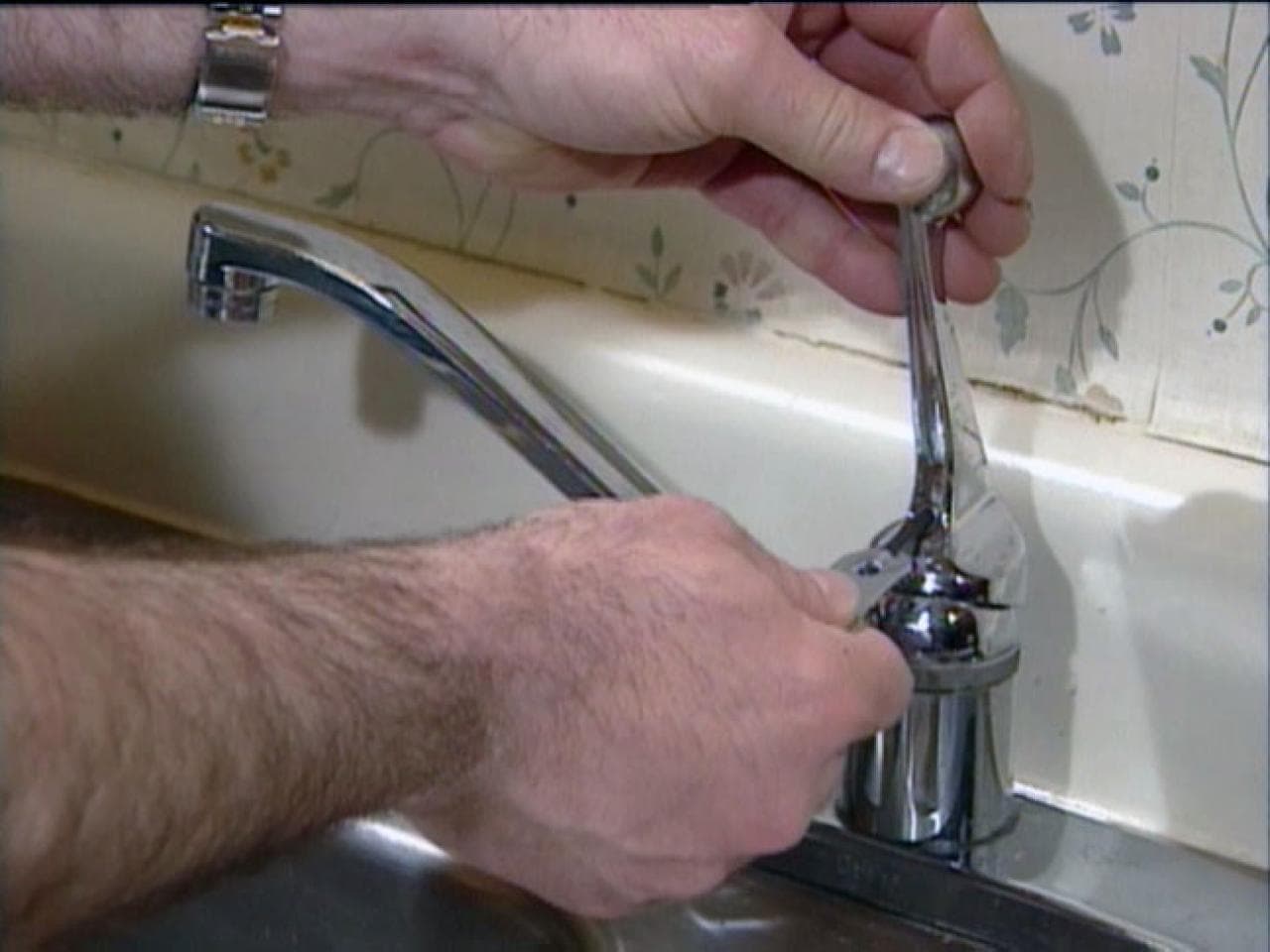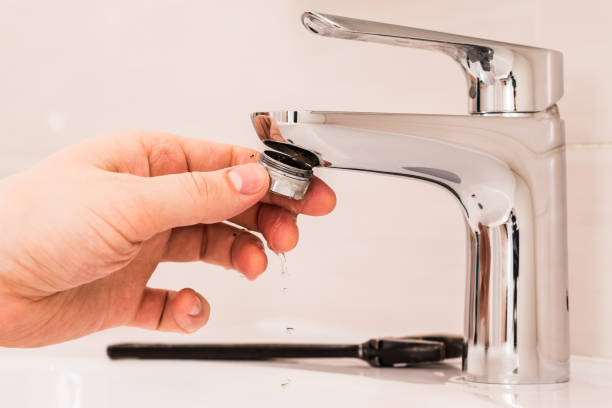Motives Why It's Important to Repair a Leaking Faucet
Motives Why It's Important to Repair a Leaking Faucet
Blog Article
What are your beliefs on Leaky Faucets: Why They Happen & What to Do About Them?

Dripping faucets could seem like a small aggravation, but their effect surpasses just the inconvenience of the audio. From drainage to incurring unnecessary monetary prices and wellness risks, disregarding a leaking tap can cause numerous effects. In this article, we'll delve into why it's crucial to address this common household issue promptly and effectively.
Wastage of Water
Environmental Influence
Trickling taps contribute considerably to water wastage. According to the Epa (EPA), a solitary faucet dripping at one drip per second can squander greater than 3,000 gallons of water each year. This not just strains water resources yet additionally impacts communities and wildlife depending on them.
Step-by-Step Guide to Repairing a Dripping Tap
Tools Called for
Before trying to repair a trickling faucet, gather the essential tools, consisting of an adjustable wrench, screwdrivers, replacement components (such as washers or cartridges), and plumber's tape.
Typical Tap Issues and Their Solutions
Recognize the type of faucet and the certain concern causing the drip. Typical troubles consist of damaged washers, corroded valve seats, or malfunctioning O-rings. Describe supplier guidelines or on-line tutorials for detailed guidance on repairs.
Financial Costs
Enhanced Water Bills
Beyond the environmental impact, dripping taps can blow up water costs considerably. The collected waste over time converts right into higher utility expenditures, which can have been avoided with prompt repair work.
Potential Residential Or Commercial Property Damages
Additionally, prolonged trickling can result in harm to fixtures and surface areas bordering the faucet. Water buildup can trigger discoloration, corrosion, and also structural problems if left unattended, leading to added repair work expenses.
Wellness Issues
Mold And Mildew and Mildew Development
The consistent presence of wetness from a trickling tap creates a suitable setting for mold and mildew growth. These fungi not just endanger interior air quality but also position health and wellness risks, particularly for people with breathing problems or allergic reactions.
Waterborne Illness
Stationary water in trickling faucets can end up being a breeding place for germs and various other microorganisms, enhancing the threat of waterborne illness. Pollutants such as Legionella germs flourish in stagnant water, possibly bring about severe health problems when ingested or inhaled.
Do it yourself vs. Expert Repair
Pros and Cons of Do It Yourself Repair Work
While some may try to fix a trickling faucet themselves, do it yourself repair work feature their own collection of difficulties. Without correct understanding and devices, DIY efforts can exacerbate the problem or bring about incomplete repair services, prolonging the issue.
Advantages of Working With an Expert Plumber
Employing a specialist plumber guarantees that the underlying root cause of the trickling tap is dealt with successfully. Plumbing professionals possess the competence and tools to detect and repair faucet issues effectively, saving time and lessening the danger of additional damage.
Environmental Obligation
Individual Contribution to Conservation
Taking responsibility for fixing trickling taps straightens with more comprehensive initiatives toward water conservation and environmental sustainability. Every person's activities collectively make a significant influence on maintaining valuable resources.
Lasting Living Practices
By prioritizing prompt fixings and taking on water-saving practices, individuals add to sustainable living techniques that benefit both existing and future generations.
Preventive Measures
Normal Maintenance Tips
To stop dripping taps, perform regular maintenance such as cleaning up aerators, inspecting for leakages, and replacing damaged parts without delay. Additionally, think about mounting water-saving devices or updating to extra efficient fixtures.
Value of Prompt Repairs
Dealing with leaking taps as soon as they're observed protects against additional water waste and possible damages, inevitably conserving both water and money over time.
Effect On Property Worth
Perception of Well-Maintained Residential Or Commercial Property
Preserving a home in good condition, including addressing upkeep concerns like trickling faucets, enhances its regarded value and desirability amongst prospective buyers or occupants.
Impact on Resale Value
Properties with properly maintained plumbing fixtures, consisting of taps, command higher resale worths in the real estate market. Dealing with trickling faucets can contribute to a favorable impact during residential property inspections and settlements.
Final thought
Resolving a trickling faucet goes beyond simple comfort; it's a crucial action toward conserving water, decreasing financial costs, and protecting health and wellness and residential property. Whether with DIY repair services or expert support, taking action to fix dripping taps is a little yet impactful way to promote liable stewardship of sources and contribute to a much healthier, a lot more sustainable future.
How to Fix a Dripping or Leaky Faucet
A leaking faucet is one of the most common problems that homeowners encounter, but it being commonplace doesn’t make it any less annoying. The constant drip drip drip of a leaking bathtub faucet, showerhead, or sink tap can disturb your home’s serenity. Left neglected, a dripping faucet can also result in higher water bills and discoloration or mold growth in your sink or plumbing fixtures.
Fortunately, you don’t have to be a trained plumber to know how to stop a dripping faucet. With some basic tools, replacement parts, and a little patience, leaky faucet repair is a breeze. In this article, we’ll explain what causes dripping faucets and how you can fix them.
What Causes a Leaking Faucet?
Kitchen and bathroom faucets come in all manner of designs, but most involve some combination of valves, O-rings, seals, and washers. The O-ring is usually the weakest link, but any one of these pieces can wear down over time. Heat, moisture, temperature fluctuations, minerals, mold, and movement can contribute to warping and corrosion, breaking the watertight seal. This just comes with the territory of being a homeowner. Everything is always subject to wear and tear, and some component parts of your appliances and fixtures need to be replaced on occasion. At least replacement O-rings are cheap!
More rarely, dripping faucets can be a symptom of excessively high water pressure. Were this the case in your home, you would probably notice that the leak is not isolated to one faucet. Water pressure issues are harder to resolve on your own. We recommend contacting a professional plumber if you suspect your water pressure is too high.
How to Fix a Dripping Faucet
Pipe wrench or monkey wrench Allen wrench set Screwdrivers Old towel or rag Shut off the water.
Before you do anything, you need to turn off the water to keep from drenching your kitchen or bathroom. You should find a valve under the sink and against the wall. Once you’ve turned this valve, try turning the faucet on to confirm that the water source has been cut off.
If you can’t locate your local valve for the faucet you’re working on, you can always shut off the water to the house at the main valve. Of course, this will prohibit anyone from using the sinks, showers, or toilets while you’re working on the faucet that’s giving you trouble.
Plug or block the drain.
You’ll be disassembling the faucet and removing some small bits of hardware. Plug the drain with a stopper or rag to avoid the possibility of a small screw falling into your P-trap.
Take apart the faucet assembly.
There are several varieties of kitchen and bathroom faucets, each with its own manner of assembly. For detailed instructions on how to disassemble your faucet, you can refer to the fixture’s manual or contact the manufacturer. If you know whether you have a ball, disc, cartridge, or compression faucet, you can find detailed schematics online.
In general, you need to begin by removing the faucet handles. You might notice a small screw that you’ll need to remove with a screwdriver or Allen wrench. If you don’t see any visible securing hardware, it’s likely hidden under a decorative cap that can be unscrewed or popped off with flathead screwdriver.
Remove each piece methodically, consulting a schematic when necessary. Take notes or arrange the pieces in such a way to make it easier to correctly reassemble the faucet later.
Remove the cartridge.
Once you’ve removed the handles and securing hardware, you should be able to remove the valve cartridge or stem. Some cartridges will slide right out. Other faucet models will require you to loosen a nut with a pipe wrench before you can remove the valve stem.
Examine the exposed hardware.
With the cartridge or stem removed, inspect the component parts. Check the rubber O-rings for wear and tear. Also examine the seat washer for corrosion or other damage. These pieces are usually the responsible parties for a dripping faucet, but it’s worth inspecting the other component parts while you have the faucet disassembled.
Find replacement parts.
Once you’ve identified which faucet component has failed, find an identical replacement. Your local hardware store should have O-rings, seat washers, and other standard components in stock. If you have a luxury or uncommon faucet, you may have to contact the manufacturer for a replacement part.
It’s a good idea to take your old parts with you to the hardware store so you can compare them with the store’s inventory and be sure you’re purchasing the correct replacement.
Reassemble the faucet.
With your new parts in hand, reconstruct the faucet and handles. Don’t be tempted to overtighten screws or nuts. You might think this could create a better seal, but it can instead damage or bend a delicate part of the assembly and create a new problem for you.
Turn on the water and test the faucet.
The only thing left to do is test your work. Unplug the sink, turn the water back on, and try the faucet. Congratulate yourself on a job well done!
https://www.libertyhomeguard.com/how-to-fix-a-dripping-or-leaky-faucet/

As an enthusiastic person who reads about 4 Common Reasons for a Leaky Faucet, I thought sharing that piece of content was important. Sharing is caring. One never knows, you may be doing someone a favor. We cherish reading our article about Water Dripping from Faucet: Why and How to Fix.
Report this page